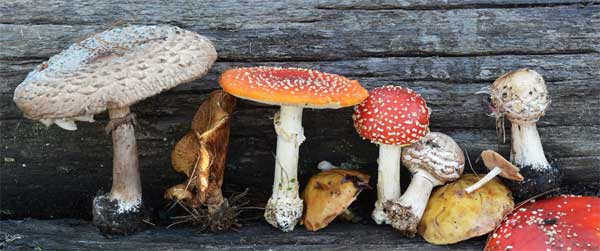Underground Exchange Benefits All
This article was first published on 23 Apr 2014.

Mushrooms
The arrival of autumn in Dunedin Botanic Garden has heralded the emergence of the oft overlooked and misunderstood inhabitants of a garden: its mushrooms.
A cursory glance around the plant collections reveals mushrooms in a variety of colours, shapes and sizes. However, these distinctive caps that we recognise as mushrooms are in fact only the tip of the proverbial fungal iceberg. Below the soil surface exists the main body of the mushroom in the form of a web of cells known as ‘mycelium’. These mycelial networks can extend over large areas of soil, providing unseen connections between a host of plant and tree species.
The pervasive nature of mycelium has led to the development of mutually beneficial relationships between certain fungi and plants. Mycelium has been shown to be able to transfer moisture and nutrients to plants from areas beyond their root structure. In exchange for these services, the fungus receives sugars from the plant.
This symbiosis is being increasingly harnessed for horticultural purposes, with fungal preparations now available that can be used to inoculate soil with beneficial mycelium prior to planting. Plants with fungal partners are able to absorb greater quantities of nutrients, resulting in increased growth and resistance to disease.
Though not strictly a ‘botanical’ resident of Dunedin Botanic Garden, fungi is an integral part of its ecosystem and should be valued as such. To disregard these fascinating organisms is to ignore a vital component of any healthy and productive garden.
Craig Huggan is an international exchange student at Dunedin Botanic Garden.


